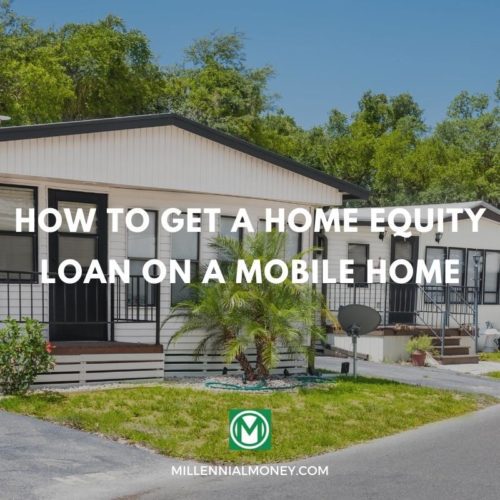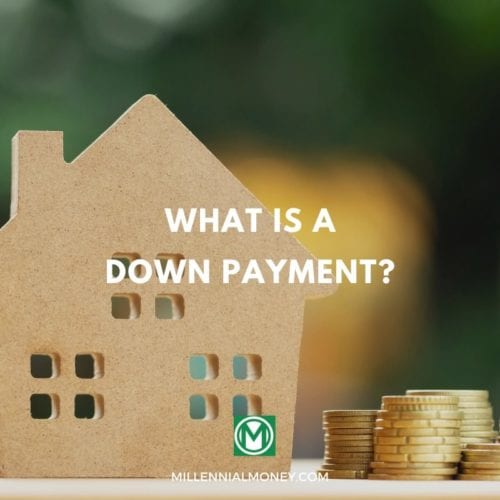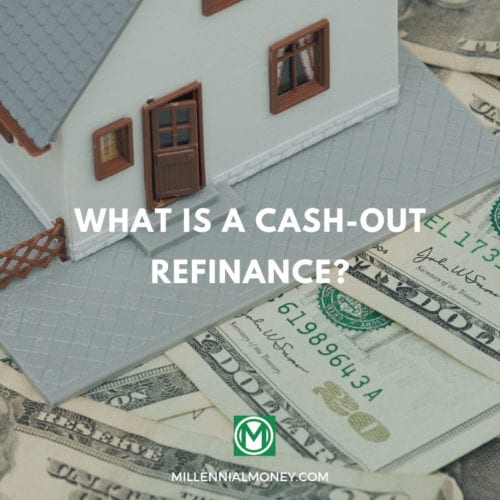Yes, a 30-year mortgage costs more than a 15-year mortgage. But is a 30-year mortgage bad? Should you always get a 15-year mortgage instead?
Or, could you get a 30-year mortgage and later change it to 15 years?
Let’s explore some answers to these common questions which so many people face when shopping for a home.
Is A 15 or 30 Year Mortgage Better?
Both 15-year and 30-year home loans have their strengths and weaknesses.
So, what’s the difference?
Here’s the deal:
- A 15-year mortgage requires a higher monthly payment but you’ll save a lot of money over the life of your loan. Plus, you’ll own the home sooner.
- A 30-year mortgage costs more in the long run but you’d pay a lower monthly payment.
Let’s look at a $250,000 loan to see how this concept might play out in reality:
In this example, I used the same 4% interest rate for both the 15-year and the 30-year loan to calculate monthly mortgage payments. Let’s see the price difference when we change only the term of the loan from 15 to 30 years.
| 15-year mortgage | 30-year mortgage | |
| Monthly Payment | $1,849* | $1,194* |
| Total interest paid | $82,860 | $179,674 |
| Total paid (principal + interest) | $332,860 | $429,674 |
*Please note: Monthly payments shown here do not include your home insurance, property taxes, mortgage insurance or other homeowners association fees.
15 Year Mortgages Have Better Interest Rates
In reality, a lender could give you a lower interest rate on a 15-year mortgage when compared to your rate on a 30-year loan.
This means you’d save even more than the chart above indicates. For example, the same 15-year loan at 3.5 percent would cost $71,697 in interest, and the monthly payment would be $1,787.
To keep things simple, let’s say you’d save $100,000 by getting a 15-year mortgage instead of a 30-year mortgage.
Most of us, given a choice to save a hundred grand by getting a 15-year loan would do so.
So why would you consider getting a 30-year loan?
Simply put: If you can’t comfortably afford the monthly payment for a 15-year loan — or if you worry the higher payment on a 15-year loan would cut too deeply into your financial freedom — a 30-year loan may be right for you.
Is A 30-Year Mortgage A Bad Idea?
As we’ve established, you’ll pay a lot more in interest – $100,000 or so more in our $250,000 loan example above – by getting a 30-year mortgage instead of a 15-year mortgage.
The question to ask is this:
What am I getting for this extra $100,000 paid over 30 years, and is it worth it?
Why A 30-Year Mortgage Might Be Better for You
Only you can decide if it’s worth it, but here’s what you may be getting:
More Financial Flexibility
By saving hundreds of dollars a month on your 30-year loan’s house payment, you’d be able to put this money toward other areas of life, including:
- Saving for Emergencies:
You should have an emergency fund with at least three months’ worth of household expenses in case you lose your job or get injured or sick. Saving on your house payment could help you create this fund. - Saving for Retirement:
If a 30-year mortgage loosens up more money in your monthly budget, you could direct those funds into an IRA for retirement. This will also give you some tax breaks, either now or later, during retirement. - Investing:
Whether it’s in a CD, with a robo-advisor, or through a brokerage house, spending less each month on your house payment could free you up for investing elsewhere. Yes, your home is a big investment, but it doesn’t have to be your only investment.
You Can Afford A Better Home
The expense of a 30-year mortgage may be worthwhile if it’s opening the door to a better house in a better neighborhood whose value will increase more rapidly.
Some financial advisors say you should always get a 15-year loan even if it means buying a less expensive home. While it’s hard to argue with the logic of hard numbers, real-life can’t always be distilled down to simple numbers.
If a 30-year mortgage allows you to buy a home you couldn’t otherwise afford, your home’s higher value and its appreciation could cut into the extra financing charges.
It’s Easier to Qualify
Mortgage lenders will take a look at your entire financial life before issuing a loan. They’ll want to know how much you earn and how much you owe on other debts.
If your debt-to-income ratio won’t comfortably leave room for the higher payments of a 15-year loan, you probably won’t qualify for the mortgage.
Even if you don’t qualify for a 15-year mortgage, you may qualify for a 30-year loan, meaning you can still buy the house.
Again, you’d pay more in interest over 30 years, but at least you’d be getting into a home of your own instead of paying your landlord.
And as we’ll see below, the added expense of a 30-year loan doesn’t have to be the final word. You can find ways to slash into that added expense.
How to Save Money On a 30-Year Mortgage
When you close on your mortgage, your lender will be required to show you a Truth in Lending report.
This report will show you how much you’ll pay for your home based on the interest and payment schedule your mortgage requires.
If you were borrowing $250,000 for 30 years at 4 percent interest, for example, your Truth in Lending report would show $429,674 as the full price.
This is a frightening moment for many homebuyers. Are we getting ripped off? Can we really afford this? Should we have shopped around some more?
Most of us go right ahead and sign the loan papers, move into the home, and make payment after payment, steadily chipping away at that huge number as the years go by.
Pay More Than The Minimum
But there’s more to the story, and despite getting an expensive 30-year loan, you can still do a lot to save money on your loan.
Your Truth in Lending report shows how much you’d pay based on the loan’s minimum requirements: paying one payment per month for 360 consecutive months.
You aren’t required to contain your payments to this schedule. You can exceed these minimum requirements, and doing so can save you a lot of money while still allowing you the flexibility and freedom of a 30-year loan.
Make 1 Extra Payment A Year
Making 13 payments a year instead of 12 can save a surprising amount of money.
Let’s continue with our example of a 30-year, $250,000 mortgage at 4 percent:
Paying an extra $1,200 per year — which is essentially one extra loan payment for our example loan — could save you about $120,000 over the life of your loan.
How could this be possible? The extra payment goes directly onto your loan’s principal, and your loan’s interest charges are generated by the size of your principal. Achieving a smaller principal means less interest.
The animating factor in calculating interest is time. By making an extra payment every year, you’re giving the bank less and less time to charge you interest. Less time means less interest — assuming you don’t have an early payment penalty.
Spread Out An Extra Payment
If the idea of coming up with an extra $1,200 once a year seems too daunting, consider splitting up the extra payment by adding $100 a month to your house payment.
This method seems more manageable to more people. For best results, be sure you’re applying this extra $100 directly to the principal of your loan.
When you’re paying your bill online, you should be able to specify how you want your payment allocated. If you simply add $100 to your payment, your lender may just lower next month’s payment by $100, diminishing the effects of your extra payment.
In the past, borrowers sent an additional check each month to indicate the extra money should go directly to the loan’s principal rather than being applied to a scheduled payment.
I like this extra payment method because you can maintain the flexibility and freedom of a 30-year loan without paying all of the extra interest charges. It’s a win-win.
Can I Refinance My 30-Year Mortgage to a 15-Year?
Looking for another way to cut into the overwhelming interest of your 30-year loan? You may like the idea of refinancing the entire mortgage as a 15-year (10-year or even 5-year) loan.
You’d have to pay closing costs again, but you’d be hitting the reset button on your home loan, starting over with a lower-cost loan.
Homeowners who make more money now than they made when they bought the house often like this idea.
And, combining a refinance with a cash-out equity option to pay for home improvements can be an efficient solution, solving two problems with one loan.
Should You Refinance?
If I don’t sound overly enthusiastic about refinancing, it’s because of this one little problem: a mortgage is structured so that you’ll pay most of the interest upfront.
Your first payment on a 30-year mortgage may knock just pennies off your balance, for example. The rest of the money goes straight into that huge pile of interest.
Each subsequent payment has a slightly larger impact on your principal. But cumulatively, you’re paying a lot more on your interest during the first half of your loan.
So, if you refinance your 30-year loan after making regular payments for 10 years, you’ve already paid a huge chunk of that overwhelming amount of interest to the bank.
Why not stick around and benefit from your hard work by making extra payments to your principal and seeing the loan’s balance diminish rapidly?
Of course, it’s up to you, the homeowner. But here’s a suggestion: if you’re going to refinance, try to do it early in the life of your loan — before you pay a ton of interest to the bank.
15-year vs. 30-year Mortgage: Which Is Right for You?
A 15-year loan costs a lot less in finance charges over time. A 30-year loan costs less month to month right now.
So which one is best?
If you’ve read this far you already know the answer to this question: The best loan is the loan that best fits your financial life.
Can you easily afford the higher payments of a 15-year loan without sacrificing in other important areas of your family’s financial life? If so, it’s a no-brainer: Get that cheaper loan and save tens of thousands — maybe hundreds of thousands — of dollars in interest.
Depending on how well you’re doing, consider a 10-year or even a 5-year mortgage to save even more than you would with a 15-year loan.
But if you can’t afford the higher payment of a 15-year loan — or if you’re just not sure — you have a harder decision.
I recommend considering the loan within the context of your larger financial life. Here are some guiding questions:
- How much stability and freedom would you have to sacrifice in order to make a 15-year loan’s higher payments?
If you’re sacrificing retirement and stocking an emergency fund, a 30-year loan may be best. - What would happen if you or your spouse lost your job or got sick and couldn’t work?
The lower payments of a 30-year loan may be a source of relief if they let you stay in the home during such an emergency. - How long do you plan to stay in the home?
If you’re planning to sell within a couple of years, you’d probably do better with a 15-year loan if possible because you’d own more of the house sooner — you’d have more freedom to sell.
I value freedom and flexibility over the best textbook answer to most every financial question — and this value would guide my decision-making.
Only you can make this calculation about your financial life and its broader impact on your freedom.






No comments yet. Add your own